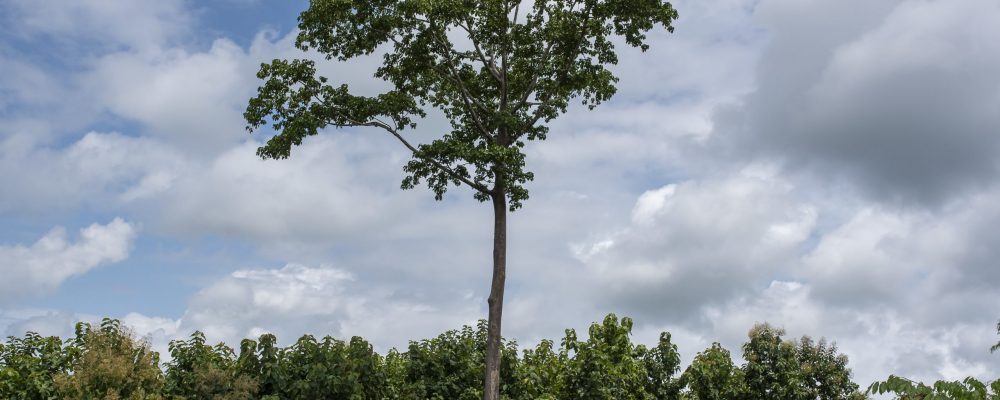
Text for anchoring
KNOWLEDGE ON HOW TO SCALE UP REDD+ IMPLEMENTATION IS CAPTURED, MANAGED AND DISSEMINATED TO ACCELERATE CLIMATE ACTION.
UN-REDD and its partners, from governments to IPLCs and the private sector, continued its knowledge management and communication activities online, running global and regional digital exchanges, webinars and workshops, while ensuring gender equity and inclusiveness. Among them:
To build capacity and share good practices among partner countries, a series of nine info briefs were produced on landscape approach and planning, forest tenure, indigenous peoples’ rights, financing and private sector, forest monitoring systems and MRV, linking REDD+, the Paris Agreement, NDCs and the SDGs, REDD+ funding mechanisms, safeguards, and gender. Methodological tools, analytical briefs and reports were made available to countries to assist them in compiling, assessing and connecting data and information on their forest solutions to the climate emergency. These knowledge products supported countries in a wide range of policy and finance processes for REDD+, including their NDC reviews, their LULUCF assessments, forest tenure and forest monitoring systems, as well as their ability to appraise and access carbon market for high-integrity jurisdictional approaches. A digital report on progress and updates in UN-REDD’s Sustainable Forest Trade in the Lower Mekong Region project was published on the UN-REDD website and disseminated widely. It features nine stories highlighting key learnings of Phase 1 and an outlook for 2022.
UN-REDD continued its storytelling strategy of highlighting the key role of forests in the green recovery, featuring regional and global stories on national progress on REDD+, indigenous approaches to forest monitoring, local forest communities’ empowerment, among others. Knowledge and country-based lessons on REDD+ were shared through 61 blog posts, often in several languages, through the quarterly REDD+ Resource newsletter which now has over 11,000 subscribers and the reimagined bi-monthly REDD+ RoundUp newsletter, with regional or thematic foci. The blog posts were seen by 120,000 visitors to the website.
The year 2021 also marked the overhaul of UN-REDD’s website, including its document repository, the Programme’s knowledge management core. This was done with an aim to strengthen capacity development across agencies and serving partner countries, as well as other REDD+ actors with lessons learned and proven good practices. The new UNREDD website also features microsites dedicated to the Sustainable Forest Trade in the Lower Mekong Region project and the Better with Forests awareness raising campaign which is tailored to a lay audience.
Text for anchoring
COLLECTIVE POLITICAL AND SOCIETAL SUPPORT TO NBS INCREASED
UN-REDD continued to garner collective political and societal support for forest-based solutions through various activities online. Among them:
UN-REDD supported the global momentum on forest positive agriculture through partnerships with different country partners and organizations such as the Tropical Forest Alliance (TFA), Food and Land Use Coalition (FOLU). Technical dialogues and interagency exchanges contributed to the conceptualization and establishment of the Food System Summit coalition, “Halting deforestation and conversion from agriculture commodities.” Events promoted forest-positive agriculture and shared knowledge, including at the European Development Days and Collaborative Partnership on Forests (CPF).
In support of international and regional indigenous peoples’ networks on issues related to the forest-climate-territory nexus, UN-REDD contributed to the 5th session of the UNFCCC Local Communities and Indigenous Peoples Platform, with a focus on channelling indigenous knowledge into national climate policy processes like REDD+ investment plans and NDC reviews. In addition, collaboration with the Asia Indigenous Peoples Pact (AIPP) continued to assist indigenous peoples in examining the degree of integration of indigenous rights and knowledge in the NDCs of 10 countries in the Asia-Pacific Region, including recommendations to make NDCs more inclusive and rights-oriented. This work also informs the works of the UNFCCC LCIP Platform. In addition, indigenous peoples’ representatives were supported to participate and contribute to UNFCCC COP26.
Event-driven social media campaigns, compelling social videos and ongoing interactive engagement with diverse audiences brought the UN-REDD Programme’s social media following to more than 73,000. The UN-REDD UNFCCC COP26 side event social media assets reached over 2 million people. A series of short social videos produced for a lay audience, under the hashtag #BetterWithForests, demonstrated the carbon and non-carbon benefits of forests for people and planet.
Text for anchoring
DIGITAL COOPERATION AND FRONTIER TECHNOLOGIES DEPLOYED TO ACCELERATE AND ENHANCE NBS
In 2021, the UN-REDD Programme continued the development and deployment of digital tools to enhance support to partner countries. The Open Foris (OF) initiative to support multi-purpose forest inventories, data processing and dissemination of results was further developed and OpenForis Arena, a web based platform, was launched. Open Foris tools have been applied in the forest sector, particularly in NFIs, in more than 20 countries, including in Zambia, Vietnam and Argentina.
In a pilot project in Colombia, UN-REDD compiled and assessed lessons and approaches for the digital participation of indigenous peoples in policy and institutional processes to further socially-inclusive digital cooperation and virtual engagement, especially targeting indigenous peoples, local communities and youth. UN-REDD also surveyed the effect of COVID-19 on the participation of women and men in REDD+ and identified ways to promote the equitable and active participation of women and men in the post-COVID era of co-operation.
UN-REDD, in collaboration with partners, is developing a new tool to assess distant drivers of deforestation using a database that connects the land footprint of agricultural and forest production to final consumption of these products through trade flows.
The methodology of the work on forest products was published in a blog. In 2021, the compilation and processing of several datasets from FAOSTAT to elaborate the national input-output tables was completed. Further work will continue in 2022 towards the finalization of the database and dissemination of the tool.

